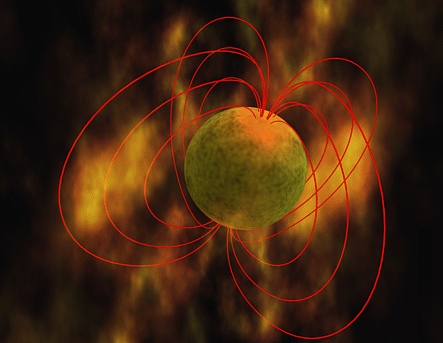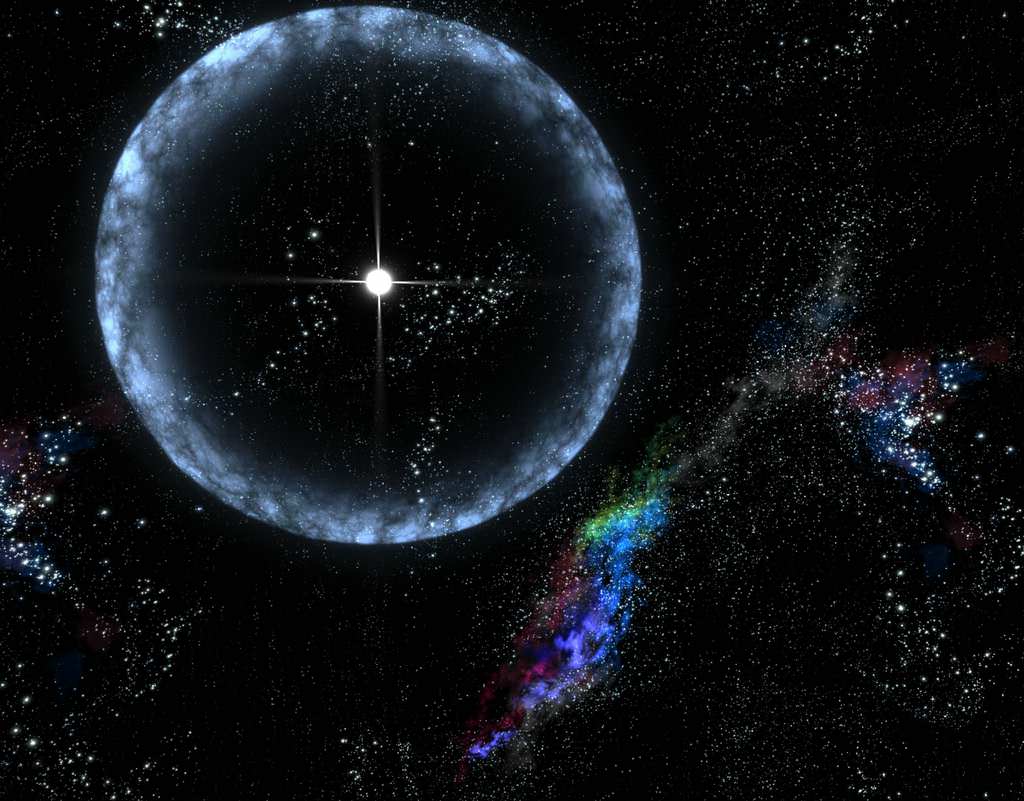Why would a spinning star suddenly slow down? Even after writing a scientific paper about the phenomenon, astronomers still appear to be in shock-and-awe mode about what they saw.
“I looked at the data and was shocked — the … star had suddenly slowed down,” stated Rob Archibald, a graduate student at McGill University in Montreal. “These stars are not supposed to behave this way.”
Archibald led a group that was observing a neutron star, a type of really, really dense object created after huge stars run out of gas and collapse. The studied star (called 1E 2259+586, if you’re curious) has a massive magnetic field that places it in a subcategory of neutron stars called magnetars.
Anyway, the astronomers were watching over the magnetar with the NASA Swift X-ray telescope, just to get a sense of the star’s rotation and also to keep an eye out for the odd X-ray explosion commonly seen in stars of this type. But to see its spin rate reduce — that was definitely something unexpected.

Previous neutron star observations have showed them suddenly rotating faster (as if spinning up to several hundred times a second wasn’t enough.) This maneuver is called a glitch, and is thought to happen because the neutron has some sort of fluid (sometimes called a “superfluid”) inside that drives the rotation.
So now, the astronomers had evidence of an “anti-glitch”, a star slowing down instead of speeding up. It wasn’t by much (just a third of a part per million in the seven-second rotation rate), but while it happened they also saw X-rays substantially increase from the magnetar. Astronomers believe that something major happened either inside, or near the surface of the star.

And, astronomers added, if they can figure out what is happening, it could shed some light on what exactly is going on in that dense interior. Maybe the fluid is rotating at different rates, or something else is going on.
“Such behaviour is not predicted by models of neutron star spin-down and, if of internal origin, is suggestive of differential rotation in the magnetar, supporting the need for a rethinking of glitch theory for all neutron stars,” read a paper on the results.
The work was released today (May 29) at the Canadian Astronomical Society (CASCA)’s annual meeting, held this year in Vancouver.
You can read the entire paper in Nature.
Credit: CASCA/McGill University


Seems glitch theory has a glitch.
Yes exactly. A short simple answer said it all.
This is more relevant to the foundations of physics than one might at first think. This could be due to a phase transition in the matter. This could represent a phase change from neutron matter to a quark liquid phase, for from that phase to a much high density phase of a color flavor mode locked phase.
LC
Acting differently? The article acts as if our scientists and t-scopes have been observing stars and their actions and ways for 30+ million years. Am I missing something? Spot on with Icrowell and Torbjorn Larsson 😉 .
Well, in a way we can. Just observe a close object, then observe another object of the same type but farther away. Viola, we’ve looked back in time.
(I know, I know, it isn’t quite that simple. 😉
Exactly, it is not that simple. Glad you know ;-). But I do understand what you were trying to say.
I was just having fun with respect to an objects life span up to 10 billion years or more vs the time they have been studied.
A preprint of “An Anti-Glitch in a Magnetar” is available here: http://arxiv.org/abs/1305.6894
Thanks LC
The top picture looks like the conception of an artists snap shot of our star around the Oort Cloud.